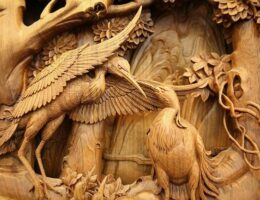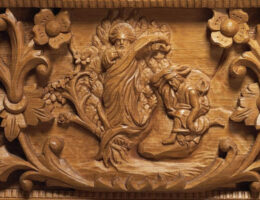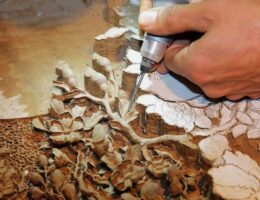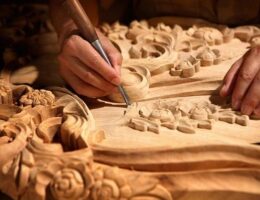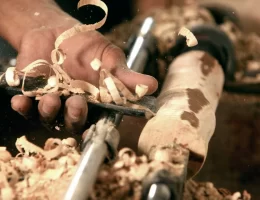IRAN ART EXHIBITION: MAT WEAVING PRODUCTS ARE VERY PRACTICAL AND USEFUL
Wicker handicrafts or mat weaving Souvenir as a thing to buy in Qeshm and Bandar abbas of Qeshm-hormuz and Hormozgan. One of the most common, most widely used, and most beautiful handicrafts in the region, due to the abundance of palm leaves and fibers and plants in swamps and salt marshes, is hand-woven from palm leaves which is known as mat weaving.
About Wicker handicrafts in qeshm and Hormozgan
The creative and tasteful people of Hormozgan and Bandar Abbas, Qeshm, Bushehr and other cities in the south of Iran even use the particles of divine blessings, and with this approach, they have become a kind of thankful creator of the universe and consider the smallest part useful. Like the palm tree, which consumes its fruits and products and benefits from its core. They also use palm leaves to make interesting and practical handicrafts.
Since the climate of the island is hot and dry, wicker products are very practical and useful, so wicker handicrafts are very prosperous. They produce products with palm leaves and straw and sell them in the market. Due to the presence of date palms in these cities, people make many handicrafts with these trees, a variety of accessories from kitchen utensils to decorative baskets that all have high quality and stunning beauty. Wicker weaving is often done by women artists in Minab, Bashagard county, Bandar Lengeh and their surroundings. Wicker products include: wicker rugs, fans, a kind of round wicker basket with a door for clothes, a kind of underlayer to cover the roofs of rural houses, lid for jars, a kind of round and large tray, Wicker pot, fruit bowl, a king of bowl for storing bread. Woven wicker mats are used as carpets, for house roof covering and home appliances, the best of which can be found in the village of Minab, 110 km east of Hormozgan. The artists of this region, with their creativity, weave different models of handicrafts.
Mats and wicker works are among the oldest man-made stuffs woven in various parts of the world using the strands of vegetable fibres or reeds.
Few samples found in Mesopotamia and Africa indicate that the people of these regions used straw and plants grown in the Mesopotamian swamps to build beds for themselves.
IRAN ART EXHIBITION: Iran, along with countries such as Japan, Korea and Mexico, is one of the 16 countries that make wicker and mat products.
The historical background of these products in Iran shows that the ancient Iranians’ use of wicker was not just limited to mats and rugs. They also used the fibres to make containers. Nowadays, wicker containers are found to be more welcomed by craftsmen.
Today, Iranians weave mats and baskets in different parts of the country, especially in the north and south where there is access to palm leaves, wheat stalks, and straws. In the northern regions of Iran, especially in Mazandaran, people use rice stems and stems of reeds to weave wickers. Also, due to the considerable wicker production in these areas, they grow some special plants on their farms. The cost of raw material is very low, but making the final product takes a lot of time and effort. Jila Ahmad Amir-Aghaee, an expert in art and handicrafts at the Cultural Heritage, Handcraft and Tourism Department of Mazandaran province, says “Weaving mat and wickerwork has become a part of the arts and craftsmanship of every household for many years in some villages of Mazandaran.
Sara Khatoon Babajanzadeh, who is known in the village by her nickname “Jeyran Khatoon”, has been in the profession for 42 years. Now, with the help of cultural heritage organisation, she has changed her ancestral profession to a thriving business.
“I got to know this art when I was a child. I learned this art from my parents in our village. In the early years, our only products were baskets and mats.”
“However, over time I tried to create new and innovative products with new ideas. Products such as boots, Galesh and bridal baskets, etc., which were warmly received at various exhibitions,” she added.
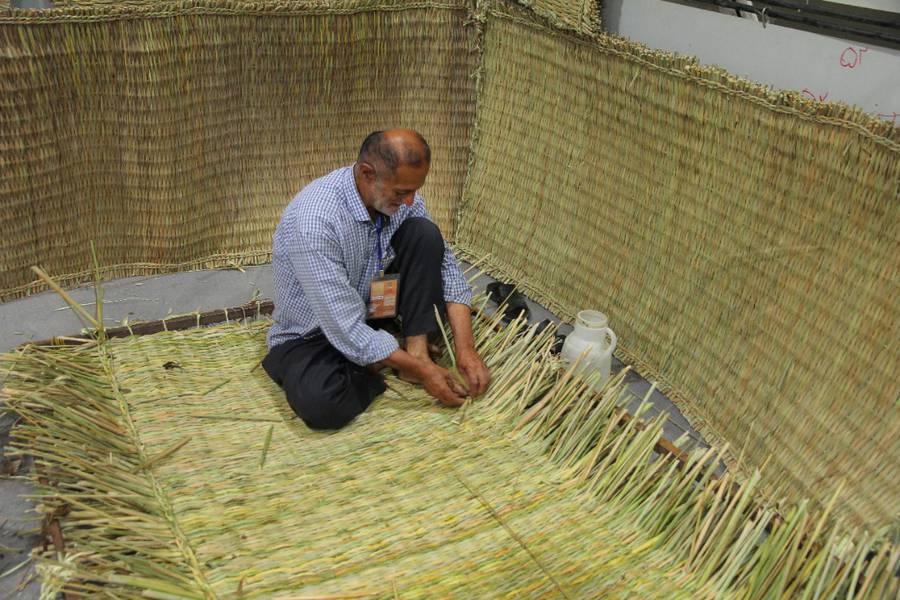
Bearing in mind the diversity of essential materials and method of weaving throughout the country, the article seeks to shed light on weaving methods used in different regions.
IRAN ART EXHIBITION: The essential materials used by mat-weavers in different parts of Iran vary on the basis of geographical diversity. These materials mostly include the palm tree leaves, straws found in marshlands in tropical and cold zones, wheat straw, withy, etc. The polishing substances include different types of oil such as oil veneer.
The tools used for mat-weaving are quite simple and limited such as sickle, different types of knives, saw, grate, pliers, scissor, needle, awl, etc. These tools are mostly used for cutting the plants and preparing the basic materials. They also act as auxiliary tools that facilitate the production process.
The straw has to reach the desirable diameter and length. At this point, it will be cut off by a sickle from a point that is closest to the root. Later, the leaves will be cut and an opening will be created by a knife in its upper part. Then, they will be piled up and pounded turning them into strips with various widths. In the weaving stage, the strips will be put beside one another and they will be woven and the product will be used as ordinary mats as well as mats used for the ceiling. There are other samples of mat-weaving in Iran in which case straws are not used as basic materials. Mats are used in different ways such as bags, bread basket, shopping basket, fruit basket, partition and lamp shade.
These products have to be protected in the face of heat, fire, pressure and strike by sharp or cutting objects. They can be washed using tepid water and ordinary detergents.


